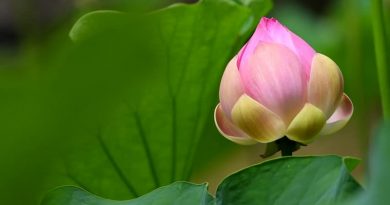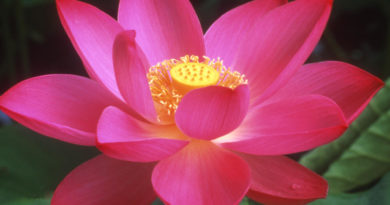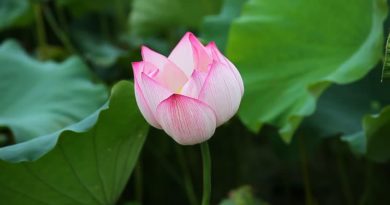THE PATTHANUDDESA DIPANI – CHAPTER 24 & 25
MAIN CONTENT
THE PATTHANUDDESA DIPANI
CHAPTER 24: AVIGATA-PACCAYA
The relation of absence is entirely the relation of contiguity; so is the relation of abeyance. The relation of continuance is also the same as the relation of presence. The words “atthi” and “avigata” have the same meaning; so also the words “natthi” and “vigata.”
[End of the Natthi-, the Vigata-, and the Avigata-Relation]
CHAPTER 25: PACCAYA-SABHAGO
The synthesis of relations will now be stated.
The relation of sahajata (coexistence) may be specified as being of fifteen kinds, i.e. four superior sahajatas, four medium sahajatas, and seven inferior sahajatas. The four superior sahajatas comprise ordinary sahajata, sahajatanissaya (dependence-in-coexistence), sahajatatthi (coexistent presence), and sahajata-avigata (coexistent continuance). The four medium sahajatas comprise annamanna (reciprocity), vipaka (effect), sampayutta (association), and sahajata-vippayutta (coexistent dissociation). The seven inferior sahajata comprise hetu (condition), sahajata-dhipati (coexistent dominance), sahajata-kamma (coexistent kamma), sahajathara (coexistent food), sahajatindriya (coexistent control), jhana, and magga (way).
Rupahara, or material food is of three kinds: rupahara (ordinary material food), rupaharatthi, and rupaharavigata.
Rupa-jivitindriya, or physical life-control is of three kinds: rupa-jivitindriya, jivitindriyatthi, and rupa-jivitindriya-avigata.
The relation of purejata (pre-existence) may be specified as seventeen kinds: six vatthu-purejatas (basic pre-existence), six arammana-purejatas (objective pre-existence), and five vattharammana-purejatas (basic objective pre-existence). Of these, the six vatthu-purejatas are vatthu-purejata, vatthupurejatanissaya, vatthu-purejatindriya, vatthu-purejata-vippayutta, vatthu-purejatatthi, and vatthu-purejata-avigata. The six arammana-purejatas are: arammana-purejata, some arammana, some arammanadhipati, some arammana-arammanupanissaya, arammana-purejatatthi, and arammana-purejata-avigata. The words “kinci” and “koci” in kinci arammanam and so forth are used in order to take in only the present nipphanna-rupas (material qualities determined by kamma and environments). The five vattharammana-purejata are vattharammana-purejata, vattharammanapurejata-nissaya, vattharammana-purejata-vippayutta, vattharammana-purejatatthi, and vattharammana-purejata-avigata.
The relation of pacchajata or post-existence may be specified as four kinds: pacchajata, pacchajata-vippayutta, pacchajatatthi, and pacchajata-avigata.
The relation of anantara (contiguity) is of seven kinds: anantara, samanantara, anantarapanissaya, asevana, anatara-kamma, natthi, and vigata. Of these, anantara kamma is the volition, which appertains to the Aryan Path. It produces its effect, i.e. the Aryan Fruit, immediately after it ceases.
There are five relations, which do not enter into any specification. These are: the remaining arammana, the remaining arammanadhipati, the remaining arammanupanissaya, all pakatupanissaya, and the remaining kind of kamma, which is asynchronous kamma.
Thus, the relations expounded in the Great Treatise (Patthana) are altogether fifty-four kinds in all.
Of these relations, all species of purejata, all species of pacchajata, material food, and physical life-control are present relations. All species of anantara and of nanakkhanika kamma are past relations. Omitting Nibbána and term-and-concept, pannatti–the relations of arammana and pakatupanissaya may be classified under the three periods of time: past, present and future. But Nibbána and term-and-concept are always outside time.
These two Dhammas–Nibbána and pannatti (concept)–are both termed appaccaya (void of causal relation), asankhata (unconditioned). [1] Why? Because they are absolutely void of Becoming. Those things or phenomena, which have birth or genesis are termed sappaccaya (related things), sankhata (conditioned things), and paticcasamuppannas (things arising from a conjuncture of circumstances). Hence those two Dhammas, being void of becoming and happening, are truly to be termed appaccayas and asankhatas.
Among things related and conditioned, there is not a single phenomenon, which is permanent, lasting, eternal and unchangeable. In fact, all are impermanent, since they are liable to dissolution. Why? Because, in coming into existence, they are related to some causes, and their causes are also not permanent. Are not Nibbána and concept paccaya-Dhammas or relating things? Are they not permanent and lasting? Yes, they are so, but no phenomenon happens entirely through Nibbána or concept alone as sole cause. Phenomena happen through, or are produced by, many causes, which are not permanent and lasting.
Those things, which are not permanent, are always distressing and hurtful to beings with the three kinds of afflictions. Therefore, they are looked upon as ill by reason of their being dreadful. Here the three kinds of afflictions are “dukkha-dukkhata” (ill due to suffering), “sankhárá-dukkhata” (ill due to conditioning), and “viparinama-dukkhata” (ill due to changeability). All things are impermanent, and are dissolving at every moment, even while occupying one posture. [2] Therefore, how can there be any essential self or core in creatures and persons, even though, all their life through, they imagine themselves to be permanent? Everything is also subject to ill. Therefore, how can there be any essential self or core in creatures and persons who are under the oppression of ills, and who nevertheless yearn for happiness? Hence all things are void of self by reason of the absence of a core.
To sum up, by expounding the twenty-four relations, the Buddha reveals the following facts: all conditioned things owe their happenings and becoming or existence to causes and conditions, and none to the mere desire or will or command of creatures. And among all the things subject to causes and conditions, there is not one that comes into being through few causes; they arise, indeed, only through many. Therefore, this exposition reaches its culminating point in revealing the doctrine of No self or No-soul.
[End of the Synthesis of Relations]
FOOTNOTES AND REFERENCES:
[1]: Here, the word appaccaya is not a kammadharaya compound but of the bahubbihi class–thus: natthi paccaya etesam ti appacaya. Asankhata is a kammadharaya compound–thus: samkariyante ti sankhata; na sankhata ti asankhata.
[2]: There are four postures for all beings: sitting, standing, walking and lying down









